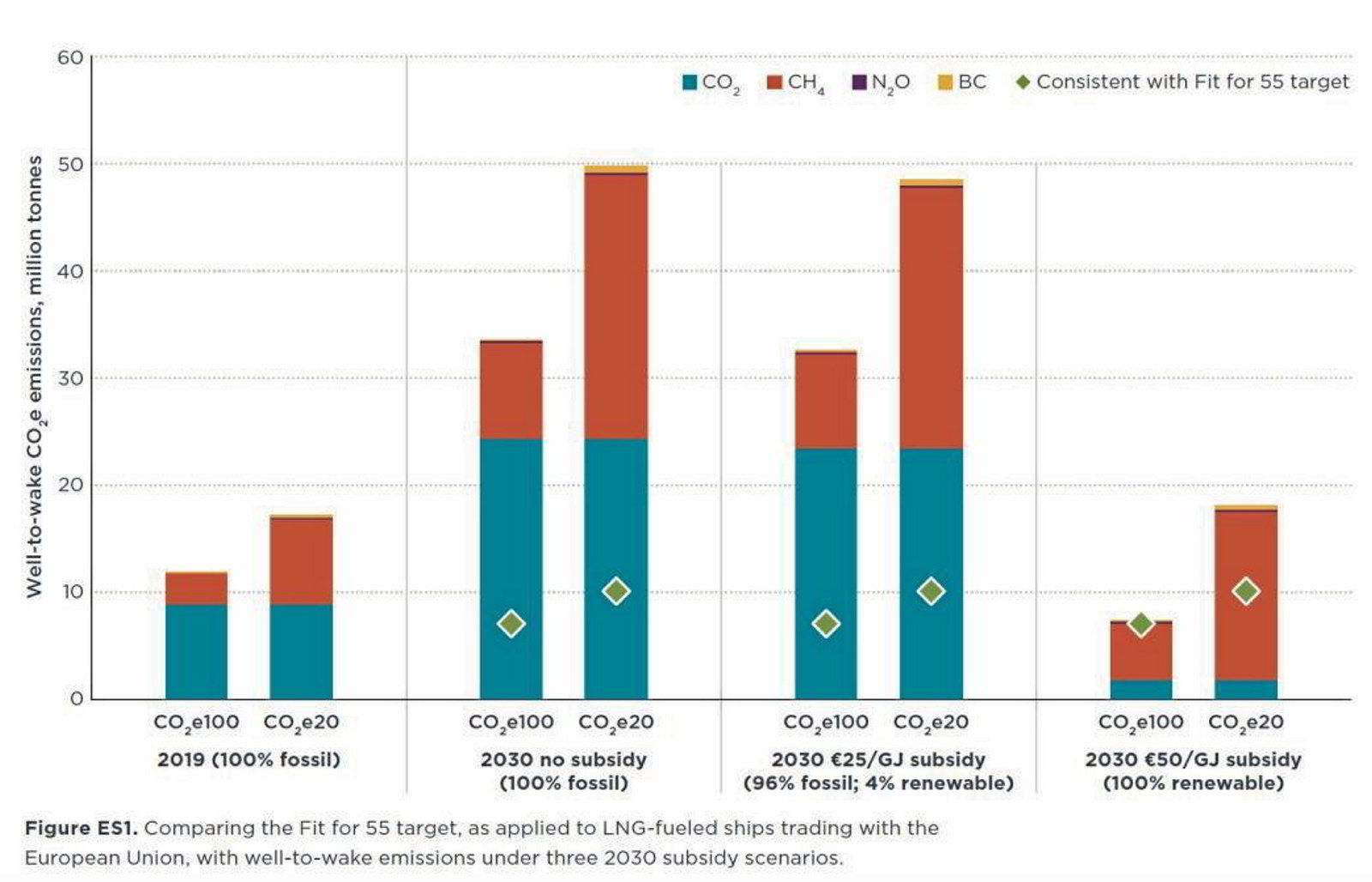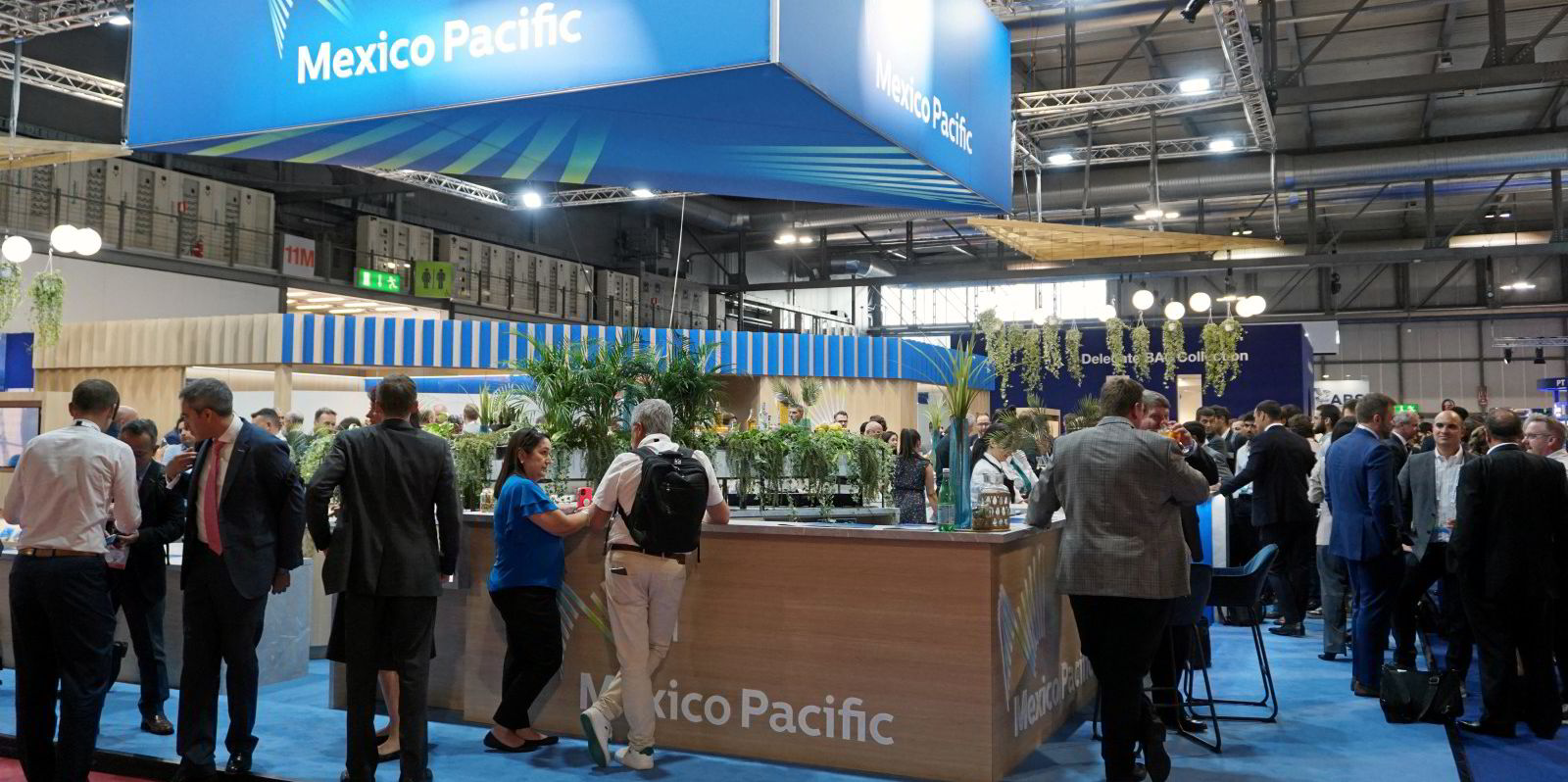As concerns mount over methane emissions associated with LNG to power ships, proponents have argued that the vessels are a stepping stone to using renewable versions of the fuel.
But will renewable LNG really save the day?
A new study by the US-based International Council on Clean Transportation (ICCT) has concluded that renewable LNG will need bigger subsidies to make it more cost-competitive by 2030. And the report’s authors said LNG-fuelled ships will have to stop leaking methane before it can significantly contribute to climate goals.
Jane O’Malley, a fuels researcher at ICCT and one of the authors of the study, said the goal was to check for unintended consequences of renewable LNG.
“Right now, the way we’re looking at it is that there are other alternatives out there, like green methanol, like synthetic diesel, that could also be explored [and] that have more advantages, since they don’t contribute to methane slip and are pretty much on par or less cost than the renewable technology,” she told TradeWinds.
The ICCT study comes amid growing concerns over methane’s more potent impact on climate change, and efforts within both the energy and shipping industries to get to grips with slippage of the fuel into the atmosphere before it is burned as fuel.
Methane’s climate impact
The ICCT said the impact of LNG, which has methane as its primary ingredient, is nearly 30 times greater than CO2 over a 100-year timespan and 80 times greater over 20 years.
The non-profit research institute said arguments in favour of using the fuel in shipping are based on arguments that vessels can switch to bio LNG and synthetic e-LNG.

But the researchers said that relies on the assumption that there will be sufficient renewable LNG to meet demand, and that engines that run on the fuel will reduce greenhouse gas emissions on a lifecycle basis.
Using European Union subsidy levels for biomethane at €25 ($25) per gigajoule, the ICCT found that renewable LNG would be priced at levels that would lead to it making up only 4% of total LNG fuel volumes at the end of the decade. The study used pre-pandemic pricing levels, well before this year’s skyrocketing prices.
“Only LNG made using inexpensive landfill gas would be cost-competitive with fossil LNG in 2030 and, unfortunately, this feedstock is in limited supply,” the study’s authors, led by ICCT marine programme lead Bryan Comer, said.

They focused on the EU because the 27-nation bloc’s Fit for 55 legislation is aiming to slash greenhouse gas emissions by 55% by 2030 compared to 1990 levels.
The study found that doubling the subsidy could lead to 100% take-up of renewable bio and synthetic LNG on European voyages. However, that would cost €17.8bn per year and would not solve the methane slip problem.
- Bio-LNG is considered nearly carbon-neutral because it is produced from organic waste flows, such as organic household and industrial waste, manure and sewage sludge.
- Synthetic LNG or e-LNG is renewable when e-methane is produced using renewable electricity and CO2, either from the air or renewable biomass.
- Both are identical to fossil LNG but are considered renewable as their upstream CO2 inputs make them carbon neutral on a well-to-wake basis.
Using all renewable LNG in 2030 would lead to a 38% reduction in well-to-wake CO2 equivalent emissions in 2030 compared to 2019 levels but, on a 20-year global warming time scale, the emissions are 6% higher.
Methane emissions would double because of leakage both upstream in the renewable LNG supply chain and downstream on the vessels that use the fuel.
“For renewable LNG to be useful in significantly contributing to climate goals, methane slip from marine engines needs to be virtually eliminated and methane leaks upstream need to be greatly reduced,” the report said.
The study comes as LNG has taken a role as a leading alternative fuel for shipping, and proponents tout its potential as a way to decarbonise the shipping fleet.
SEA-LNG, a multi-sector industry coalition, described it in August as a “safe, mature, commercially viable marine fuel” that provides a “pragmatic pathway” to zero-emission shipping.
Vessels equipped to run on the fuel are future-proofed for 2050 emissions goals because of the ability to drop in bio-LNG or synthetic LNG, said the group, which has highlighted that the shipping industry has been tackling methane slip from engines.
Key adopters and producers of the fuel are looking to tackle fugitive emissions, with major players Mediterranean Shipping Co and Carnival Corp joining energy giant Shell and others to form Methane Abatement in Maritime Innovation Initiative, as TradeWinds has reported.
But O’Malley pointed to shipping names such as AP Moller-Maersk that are turning to methanol as an alternative.
“I think those fuels or those technologies present more long-term advantages over renewable LNG,” she said.
Read more
- Gastech: ‘Gassing’ in Milan gets loud as US LNG producers take centre stage
- New methane abatement coalition plans to unveil guidelines in a year
- Seven big names team up on methane abatement for LNG in shipping
- French liner giant CMA CGM launches $1.5bn green transition fund
- New LNG carrier design floated offering 18% CO2 emissions cut




